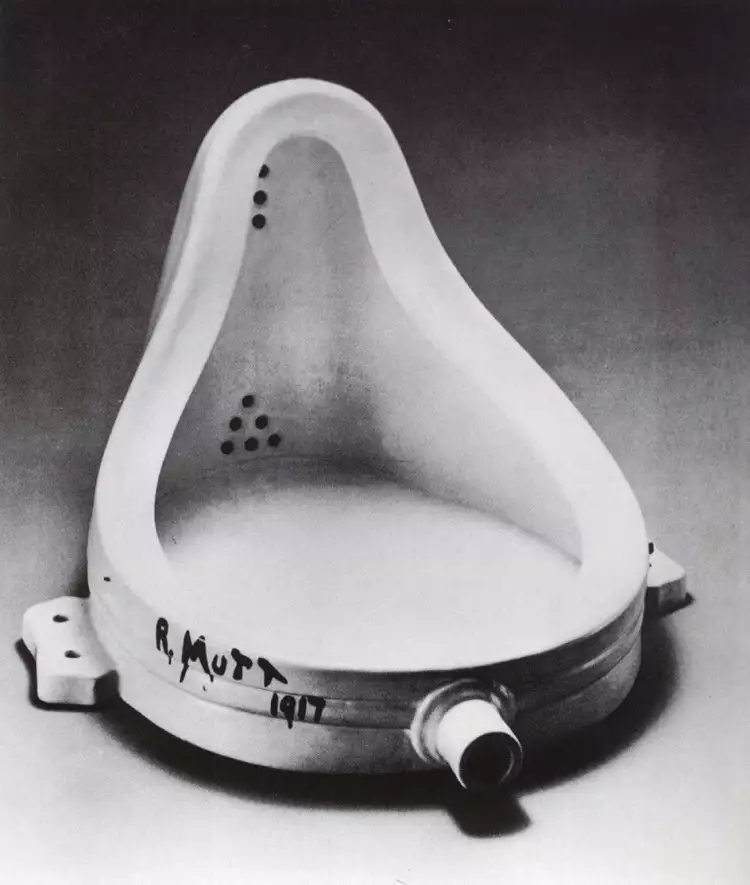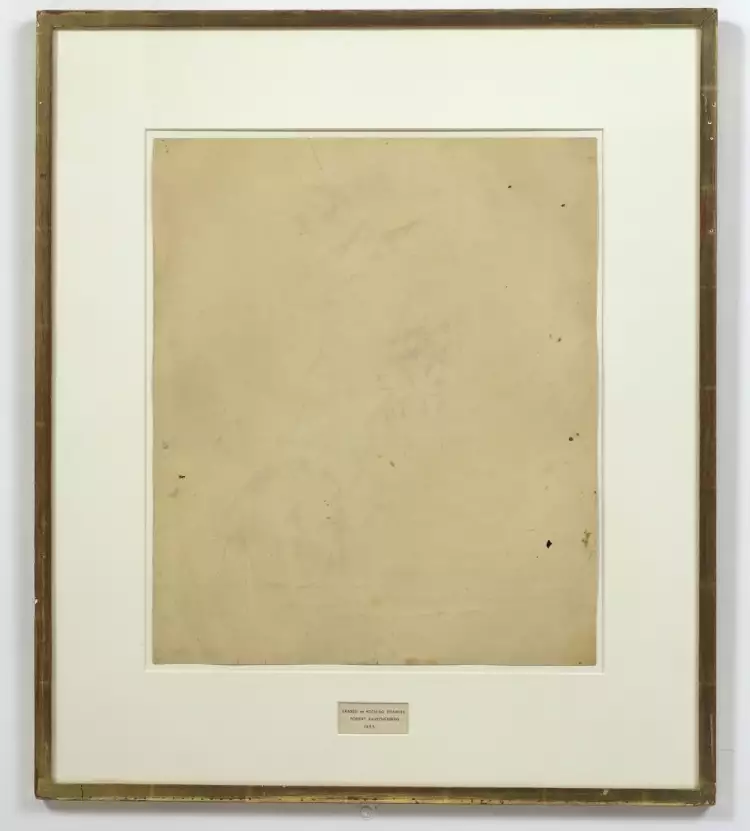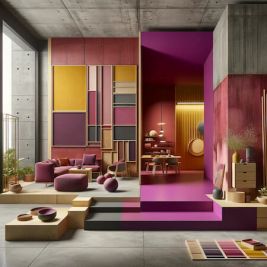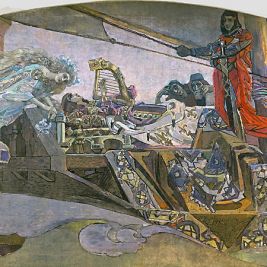
Conceptualism is an art in which the idea is always more important than the form of the work: the essence, characteristics, history
Conceptualism (from Latin "conceptus" - thought, conception) is a postmodernist movement in art that proclaims the supremacy of the idea of a work over the form of its artistic expression. Followers of conceptualism believe that their paintings, sculptures, installations, and performances should evoke not emotions but a desire to intellectually reconsider what is seen.
 Conceptualism. Bruce Nauman. The true artist helps the world by revealing mystic truths, 1967
Conceptualism. Bruce Nauman. The true artist helps the world by revealing mystic truths, 1967
Conceptualism is not commercial art; any everyday objects, natural materials, and even parts of the human environment can be the subjects of creativity in it. A conceptual artist does not seek to create a finished work but tries to convey their ideas to the viewer, involving them in a kind of intellectual game.
History of Conceptualism
Conceptualism emerged in the global art scene based on a reevaluation of the ideas of avant-garde movements of the first half of the 20th century—Dadaism and Minimalism. The creative work of Marcel Duchamp played a significant role in its formation. The ingenious artist began using ready-made objects as provocative works of art in the 1910s and invented the innovative technique of ready-made.
 Conceptualism. Marcel Duchamp. Fontaine, 1917
Conceptualism. Marcel Duchamp. Fontaine, 1917
In the 1960s, in developed Western countries, the ideas of the necessity of dematerializing art began to spread actively. Advocates urged artists to abandon the creation of classical works (paintings or sculptures). The true value lies only in the artist's idea, which can be conveyed to the viewer in various ways.
 Conceptualism. Gerhard Richter. Light-fall from the stained-glass window in the Kölner Dom, 2007
Conceptualism. Gerhard Richter. Light-fall from the stained-glass window in the Kölner Dom, 2007
The term Conceptual Art was first used by the American Henry Flynt in his eponymous philosophical work in 1961. However, Joseph Kosuth is commonly considered the true founder of conceptualism, as he developed Duchamp's ideas and advocated not restricting the artist in the means of expressing their intentions.
 Conceptualism. Lawrence Weiner. Bits and pieces put together to present a semblance of a whole, 2005
Conceptualism. Lawrence Weiner. Bits and pieces put together to present a semblance of a whole, 2005
As a demonstration of this new art, Kosuth presented his famous installation "One and Three Chairs" to the public in 1965. The work consisted of a combination of three elements: a regular wooden chair, its photograph, and a description from an encyclopedia article.
 Conceptualism. Joseph Kosuth. One and Three Chairs, 1965
Conceptualism. Joseph Kosuth. One and Three Chairs, 1965
The philosophy of conceptualism, devoid of commercial undertones, quickly found resonance in intellectual circles. Innovative ideas rapidly gained popularity not only in the United States but also in Western European countries. In January 1970, the first specialized exhibition of conceptualist works took place in New York.
 Conceptualism. Robert Rauschenberg. Erased de Kooning Drawing, 1953
Conceptualism. Robert Rauschenberg. Erased de Kooning Drawing, 1953
In the subsequent decade, conceptualism reached the peak of popularity in global culture. However, the interest in this movement did not completely disappear in the following years. In the 21st century, conceptual art is still in demand among the public.
 Conceptualism. Piero Manzoni. Artist's Shit, 1961
Conceptualism. Piero Manzoni. Artist's Shit, 1961
Key Features of Conceptualism
Conceptual works of art have distinctive characteristics that set them apart. Such works can be identified by the following features:
- Impacting not on emotional but on intellectual perception of the viewer.
- Frequent use of explanatory text accompanying the work.
- The conscious rejection by the artist of the significance of form in favor of the importance of the meaning (idea) of the work.
- Creating artistic objects from any available objects chosen by the artist.
 Conceptualism. Sol LeWitt. Open geometric sculpture, 1991
Conceptualism. Sol LeWitt. Open geometric sculpture, 1991
According to conceptualists, the artist has the right to decide what truly constitutes a work of art for them and may choose to disregard the opinions of others.
Prominent Conceptual Artists
The names of well-known conceptual artists are familiar to enthusiasts of contemporary art. Noteworthy in our article are:
- Joseph Kosuth - the founder of modern conceptual art, author of famous installations. A long-time editor of the magazine Art & Language, a recognized theorist of conceptualism.
- Sol LeWitt - creator of artworks based on simple geometric shapes in monochromatic technique. Author of the fundamental work - the conceptualists' manifesto titled "Paragraphs on Conceptual Art."
- Bruce Nauman - versatile American artist widely known for neon signs to demonstrate wordplay. Author of sculptures, installations, media works, and spectacular performances.
- Yves Klein - one of the most original French painters and sculptors of the mid-20th century, renowned for a patented shade of blue.
 Conceptualism. Bruce Nauman. Double Cage Piece, 1974
Conceptualism. Bruce Nauman. Double Cage Piece, 1974
On the Very Important Lot portal, you can not only read interesting articles about art but also participate in art auctions. Our website also provides everyone with the opportunity to buy paintings and sculptures in various styles directly from contemporary artists and sculptors.
 Stained glass is a grand masterpiece of monumental art made from small pieces of colored glass
Stained glass is a grand masterpiece of monumental art made from small pieces of colored glass  Emerging Color and Material Trends in Architecture for 2023
Emerging Color and Material Trends in Architecture for 2023  László Moholy-Nagy was a brilliant artist, a great experimenter, and an outstanding art theorist
László Moholy-Nagy was a brilliant artist, a great experimenter, and an outstanding art theorist  Acrylic is a painting technique and a type of artistic paint: essence, history, advantages, application
Acrylic is a painting technique and a type of artistic paint: essence, history, advantages, application  Hyperrealism - the perfect authenticity of artistic illusion
Hyperrealism - the perfect authenticity of artistic illusion  The Return of Nature: Embracing Nature Renewal Art in 2024
The Return of Nature: Embracing Nature Renewal Art in 2024  The Art of Ancient Russia is a unique blend of pagan traditions of Eastern Slavs and Byzantine influence on the local culture
The Art of Ancient Russia is a unique blend of pagan traditions of Eastern Slavs and Byzantine influence on the local culture  Modern - breakthrough or just a transitional period
Modern - breakthrough or just a transitional period  Fashion Photography - the Dazzling World of Fashion, Models, and Glossy Magazines
Fashion Photography - the Dazzling World of Fashion, Models, and Glossy Magazines  Etching is a type of engraving and printing technique
Etching is a type of engraving and printing technique